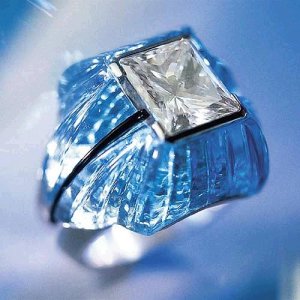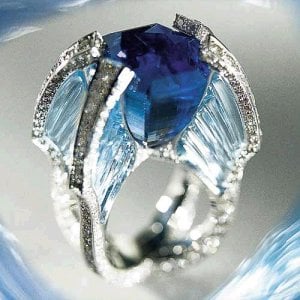Volred
Rough_Rock
- Joined
- Dec 16, 2003
- Messages
- 40
Is there a measurement we use for the hardness of a platinum ring compared to a 14k gold ring? Or an 18k gold ring?
For example:
If you take a piece of 10mm reinforcing bar used in construction you can bend this piece of metal pretty easy
If you take a piece of 20mm reinforcing bar you cannot bend this bar at all. It is too thick to be bent.
I know that we can rate the hardness of materials on a scale of 0-10 where 0 is what... water? and 10 would be DIAMOND. If you take a diamond you can scratch any other surface.
But if you take a diamond and drop it off of a 1o storey building the diamond would shatter when it hits the bottom. Whereas a rubber ball, or a steel stud would not shatter, but would bounce, and/or deform permanently.
I remember seeing some hardness rating of concrete, compared to steel, compared to glass in school. And you can get glass pretty hard.
SO... Now time for my question:
I am designing a ring for my girl. I want to have a silver ring (platinum or gold I have not decided yet) and this silver ring will have a tension setting, holding the ring in place. Where the ring supports the diamond, I want to have glass. Yes that is right. I want to have glass supporting the ring (in a tension ring none the less). This way the diamond will be fully exposed to all light from all sides. Others will be able to see the ring from all sides.
I do not want a ring that is going to be covered on the bottom by the ring, I want the ring to stand out and soak in all light that it can.
Drawings for this ring are almost finished. (I work on this ring when I have nothing else to do at work)
Do any of you think that it is possible to mix glass and platinum? or mix glass and gold?
Would there be a wear and tear issue?
Would the glass shatter if bumped against something? Where platinum would not. (this is where hardness comes into play)
Would there be an issue of the two materials interacting and discoloring, or seperating if they are in close contact?
Would I even be able to take glass and form it to make a prong at all? Or is this work just too too fine for glass?
For example:
If you take a piece of 10mm reinforcing bar used in construction you can bend this piece of metal pretty easy
If you take a piece of 20mm reinforcing bar you cannot bend this bar at all. It is too thick to be bent.
I know that we can rate the hardness of materials on a scale of 0-10 where 0 is what... water? and 10 would be DIAMOND. If you take a diamond you can scratch any other surface.
But if you take a diamond and drop it off of a 1o storey building the diamond would shatter when it hits the bottom. Whereas a rubber ball, or a steel stud would not shatter, but would bounce, and/or deform permanently.
I remember seeing some hardness rating of concrete, compared to steel, compared to glass in school. And you can get glass pretty hard.
SO... Now time for my question:
I am designing a ring for my girl. I want to have a silver ring (platinum or gold I have not decided yet) and this silver ring will have a tension setting, holding the ring in place. Where the ring supports the diamond, I want to have glass. Yes that is right. I want to have glass supporting the ring (in a tension ring none the less). This way the diamond will be fully exposed to all light from all sides. Others will be able to see the ring from all sides.
I do not want a ring that is going to be covered on the bottom by the ring, I want the ring to stand out and soak in all light that it can.
Drawings for this ring are almost finished. (I work on this ring when I have nothing else to do at work)
Do any of you think that it is possible to mix glass and platinum? or mix glass and gold?
Would there be a wear and tear issue?
Would the glass shatter if bumped against something? Where platinum would not. (this is where hardness comes into play)
Would there be an issue of the two materials interacting and discoloring, or seperating if they are in close contact?
Would I even be able to take glass and form it to make a prong at all? Or is this work just too too fine for glass?








300x240.png)